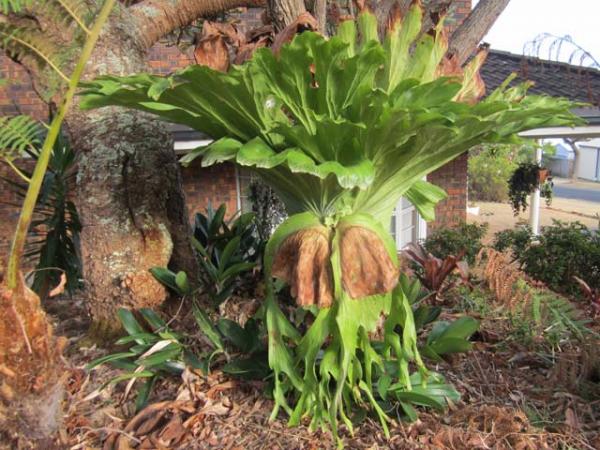Array
(
[0] => Array
(
[id] => 129
[is_published] => 1
[websiteID] => 5
[url] => /landscaping/garden-walls.php
[page_status] => Published
[number_of_ads] => 2
[can_use_editor] => 1
[last_modified_date] => 2014-04-28 00:00:00
[last_modified_by] => Angela
[checked_for_duplicate_content] =>
[title] => Choosing a garden walls in 6 easy steps
[heading] => Choosing your garden wall in 6 easy steps
[meta_description] => Learn about the various types of garden walls and how to select one that suits your requirements.
[article_category_1] => Landscaping
[article_category_2] =>
[article_category_3] =>
[article_category_4] =>
[article_category_5] =>
[business_category_1] => Landscaper
[business_category_2] => Nursery
[business_category_3] => Garden Designer
[business_category_4] => Landscape Architect
[business_category_5] =>
[number_of_google_mrecs] => 1
[show_google_ad_bottom_of_page] => 1
[show_get_quotes_top_of_page] => 1
[show_get_quotes_rhs_of_page] => 1
[show_directory_search_widget] => 1
[show_trending_content_widget] => 1
[show_facebook_widget] => 1
[show_further_reading_section] => 1
[show_sponsors_section] => 1
[show_top_article_ad] => 1
)
[1] => Array
(
[id] => 547
[is_published] => 1
[websiteID] => 5
[url] => /landscaping/too-much-rain.php
[page_status] => Published
[number_of_ads] => 2
[can_use_editor] => 1
[last_modified_date] => 2013-10-26 00:00:00
[last_modified_by] => Angela
[checked_for_duplicate_content] =>
[title] => Combating to much rain - 8 top tips
[heading] => Combating too much rain - 8 top tips
[meta_description] => Tips for the gardener on how to cope with lots of rain.
[article_category_1] => Landscaping
[article_category_2] =>
[article_category_3] =>
[article_category_4] =>
[article_category_5] =>
[business_category_1] => Landscaper
[business_category_2] => Nursery
[business_category_3] => Garden Designer
[business_category_4] => Landscape Architect
[business_category_5] =>
[number_of_google_mrecs] => 0
[show_google_ad_bottom_of_page] => 0
[show_get_quotes_top_of_page] => 0
[show_get_quotes_rhs_of_page] => 0
[show_directory_search_widget] => 1
[show_trending_content_widget] => 1
[show_facebook_widget] => 1
[show_further_reading_section] => 1
[show_sponsors_section] => 0
[show_top_article_ad] => 1
)
[2] => Array
(
[id] => 546
[is_published] => 1
[websiteID] => 5
[url] => /landscaping/get-the-right-turf-for-your-situation.php
[page_status] => Published
[number_of_ads] => 1
[can_use_editor] => 1
[last_modified_date] => 2013-09-18 00:00:00
[last_modified_by] => Alan
[checked_for_duplicate_content] =>
[title] => Get The Right Turf For Your Situation
[heading] => Get The Right Turf For Your Situation
[meta_description] => Tips from OzBreed. Learn how to choose the right turf for your garden or other grassy area.
[article_category_1] => Landscaping
[article_category_2] =>
[article_category_3] =>
[article_category_4] =>
[article_category_5] =>
[business_category_1] => Landscaper
[business_category_2] => Garden Maintenance
[business_category_3] => Garden Supplies
[business_category_4] => Garden Designer
[business_category_5] => Garden Tools
[number_of_google_mrecs] => 1
[show_google_ad_bottom_of_page] => 1
[show_get_quotes_top_of_page] => 1
[show_get_quotes_rhs_of_page] => 1
[show_directory_search_widget] => 1
[show_trending_content_widget] => 1
[show_facebook_widget] => 1
[show_further_reading_section] => 1
[show_sponsors_section] => 1
[show_top_article_ad] => 1
)
[3] => Array
(
[id] => 545
[is_published] => 1
[websiteID] => 5
[url] => /landscaping/choosing-a-landscaper.php
[page_status] => Published
[number_of_ads] => 2
[can_use_editor] => 1
[last_modified_date] => 2013-09-10 00:00:00
[last_modified_by] => Alan
[checked_for_duplicate_content] =>
[title] => Choosing a landscaper
[heading] => Choosing a landscaper
[meta_description] => Top tips for choosing the best landscaping company for your home or business.
[article_category_1] => Landscaping
[article_category_2] =>
[article_category_3] =>
[article_category_4] =>
[article_category_5] =>
[business_category_1] => Landscaper
[business_category_2] => Nursery
[business_category_3] => Garden Designer
[business_category_4] => Landscape Architect
[business_category_5] =>
[number_of_google_mrecs] => 1
[show_google_ad_bottom_of_page] => 0
[show_get_quotes_top_of_page] => 1
[show_get_quotes_rhs_of_page] => 0
[show_directory_search_widget] => 1
[show_trending_content_widget] => 1
[show_facebook_widget] => 1
[show_further_reading_section] => 1
[show_sponsors_section] => 0
[show_top_article_ad] => 1
)
)
Plant description
The staghorn fern, or Platycerium superbum, is an epiphytic large fern that grows well in sub-tropical to tropical areas, and in sheltered spots in temperate areas. The fern is native to rainforest areas of northern NSW and Queensland, where it grows on trees or sometimes on rocks. The fern resembles a collection of antlers (hence the name), that grow from a central crown or nest of fronds. This crown collects leaf litter and dead insects, which feed the plant. The antler fronds can grow to 2 metres in length.
In the garden, the fern can be attached to a board or similar, which can then be attached to trees, walls or fences. It can also be attached directly to a tree host. The fern is epiphytic, and not parasitic. As the fern grows, it can be fed by placing organic matter, such as banana skins and tea leaves, etc, into the top crown of the fern. Staghorns like moderate humidity, good air circulation and bright light.
Propagation is only from spores, as this fern, unlike other Platyceriums, does not make offsets or pups. The spores are brown felty masses on the underside of mature fronds. A section of frond with ripe spores is placed into a paper bag. The spores will shed, and can then be sown onto sterilised damp coir and kept under glass to grow.
Further reading: Top ten native plants and
Best natives for pots and small gardens (articles written by native plant expert and horticulturalist Angus Stewart).
Additional plant information
Flowers
Flower colour: not specified
Flowering season: not specified
Plant size
Maximum height: 1 metres
Minimum height: not specified
Maximum width: 1 metres
Minimum width: not specified
Sunlight, frost & salt tolerance
Will tolerate partial sunlight.
Light frost tolerance.
Plant is not salt tolerant.
Fauna attracting?
Not specified.
Climate
This plant species will grow in the following climates: temperate, subtropical, tropical.
Soil types & conditions
Loam: not specified.
Clay: not specified.
Sand: not specified.
Miscellaneous information
Native to: Australia.
Planting season: not specified.
Types of fertiliser: not specified.
Find a nursery
Search for another plant

